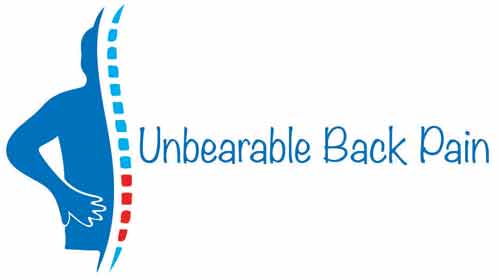
It comes out of nowhere, a sharp reminder from your body that all is not well. Everything seemed to be going well and then wham, one moment your lower back was supporting you, and a split second later it betrayed you. Millions grapple with these symptoms, making it a common complaint among adults. So remember you’re not alone!
A sharp, piercing ache is more than just discomfort. It disrupts your routine, perhaps even your sleep, causing worry and added stress. It’s why understanding what’s happening beneath the skin is crucial. Many reasons could be causing that sudden stab of pain and it’s important to address it before it gets worse.
Recognizing symptoms early on isn’t just for comfort. It may prevent a minor issue from escalating into something that requires more intensive intervention. So, it pays to listen to your body and respond with care.

Common Culprits Behind Your Sudden Back Woes
If you’re reading this, your lower back might be giving you a bit of trouble. It’s crucial to trace your back pain to its roots because the cause dictates the cure, and there are some usual suspects behind sudden lower back pain.
Picture a colleague wincing after picking up a heavy box. That’s often a classic case of a muscle or ligament strain, resulting from overzealous lifting, an awkward twist, or a sudden move. The outcome is almost always sharp pain, uninvited muscle spasms, and stiffness. To avoid future episodes, it’s important to lift with your legs, not your back, and keep your core muscles strong.
A herniated disc is another possibility. Imagine the cushioning in your spine to be like jelly donuts (jam doughnuts if you’re from the UK). Over time or due to injury, that ‘jelly’ can ooze out, pressing on nerves and causing sciatica. This could send pain down your leg, maybe with some numbness and tingling for good measure. Age and wear and tear are often to blame, so keeping active and maintaining a healthy weight lessens the risk.
Another cause could be spinal stenosis, which is like a traffic jam in your spinal canal. In simple terms, this is where everything narrows and nerves get crowded. This brings on pain, numbness, or muscle weakness, mostly in the legs. Regular exercise and posture checks are vital to keep this under control.
Perhaps you’ve heard of degenerative disc disease? It’s an unwelcome part of the aging process that sees your discs (those spinal shock absorbers) gradually break down, leading to chronic pain that can spike with sudden movements. Core strengthening and flexibility exercises can be helpful here too.
Or it could be facet joint dysfunction. Think of facet joints like the hinges on a door, allowing your spine to move smoothly. But just like a rusty hinge, these joints can wear out or get injured, triggering pain usually focused on one side of your lower back and possibly radiating elsewhere.
The sacroiliac joint is another thing to consider which is the vital connection that connects your spine to your hips. When inflamed or misaligned, pain in the lower back and buttocks can emerge, sometimes shooting down one leg. Keeping a strong core and strengthening your hip flexibility can bolster this joint.
Finally, don’t overlook the rare diagnoses like kidney stones, which mimic back pain by sending piercing sensations to your lower back. Although occasional, conditions like osteoporosis, infections, or tumors could be sneaky aggressors against your spine.
There are some first steps you can take to handle sudden lower back pain—practical moves you can make as you pin down the cause. Remember, while these insights can guide you, if you’re in severe distress or if the pain lingers, it’s best to consult with a healthcare professional.

First Aid for Your Back: Immediate Steps You Can Take
When sudden lower back pain strikes, taking immediate action can make a significant difference in your comfort and recovery speed. The correct first steps can prevent further injury and ease discomfort, even before you see a healthcare provider.
The initial hours after experiencing back pain are critical. Modern-day thinking is that rest plus movement is essential. Avoid any activities that worsen the pain, giving your back the chance to heal. However, long periods of inactivity can do more harm than good, so aim for a balanced approach.
I can vouch for this from personal experience. When I was first struck down with severe pain, I was advised to rest for a few weeks. To be fair to the doctors, in those days it was thought to be the best cure (we’re talking over thirty years ago). But medicine and experience have proved that in most cases gentle movement improves the condition. But I stress the word “gentle”.
Using ice packs immediately following your pain onset may reduce inflammation and provide relief. For the first 48 hours, apply ice to the affected area for 15 to 20 minutes, several times a day. Once the initial swelling has subsided, you can switch to heat therapy. Gentle heat from a heating patch or warm towel can relax tense muscles and improve blood flow.
Pain relief medication can help manage your symptoms during this uncomfortable time. Over-the-counter options like NSAIDs (Non-steroidal anti-inflammatory drugs) such as Nurofen, reduce inflammation, while Panadol can help alleviate the pain. It’s important to follow the recommended dosages and consult with a pharmacist or doctor if you have any concerns.
Once the acute pain starts to diminish, gentle stretching and low-impact exercises can be beneficial. These movements can help strengthen the muscles that support your spine, improving your flexibility and preventing future episodes of pain.
Maintaining good posture plays a crucial role in back health. It relieves pressure on the spine and muscles, reducing the risk of strain or injury. Pay close attention to your posture while sitting, standing, and especially when lifting heavy objects.
Don’t underestimate the power of staying hydrated and eating a balanced diet. Adequate nutrition can aid the body’s healing process, providing the necessary support for a quicker recovery.

Navigating Healthcare: Knowing When to Consult a Professional
I cannot stress enough how vital it is to listen to your body. If your back pain doesn’t subside after a few days or becomes severe, it’s a clear signal to consult a healthcare professional. Persistent discomfort is more than just an inconvenience; it could be a symptom of a deeper issue that requires medical intervention.
Experiencing pain that refuses to stay in one place and instead shoots down your leg is a signal that shouldn’t be ignored. This type of radiating pain may point to nerve involvement such as sciatica, and it’s a clue that you need a professional’s insight.
Certain symptoms act like alarms. If you notice a sudden loss of bladder or bowel control or if the pain is a result of a direct injury or trauma, do not delay. These scenarios could indicate serious conditions, and require immediate attention.
Prepare to speak with your doctor by noting down the details of your pain — the intensity, location, what improves or worsens it, and any other associated symptoms. Knowledge is power, and in this case, it equips your healthcare provider with the necessary information to help resolve your lower back pain effectively.
Remember, your path to recovery starts with taking that first step toward seeking help. Your back is central to almost every move you make. Prioritize its health, and you invest in your overall well-being. Take care, take action, and always heed the signals your body sends you.
Final Thoughts
In conclusion, understanding the causes of low back pain in women is essential for effective management and relief. Incorporating supportive devices can play a significant role in alleviating discomfort. One such product is the UZSUZZ Heated Back Support Belt, designed to provide immediate back pain relief by reducing pressure on discs and ligaments.
Key Features of the UZSUZZ Heated Back Support Belt:
- Immediate Back Pain Relief: This belt offers effective support, alleviating backache caused by conditions such as arthritis, disc herniation, sciatica, spinal stenosis, and scoliosis.
- Orthopaedic Support for Lower Back: Equipped with four strategically positioned plastic stays, it provides robust support to the lower lumbar region. The adjustable and breathable double-pull elastic straps allow you to customize the compression level for optimal comfort.
- Back Injury Protection at Work & Gym: Whether you’re lifting boxes or sitting for extended periods, the UZSUZZ belt offers essential support to prevent back injuries, making it suitable for various activities.

Investing in a quality back support belt like the UZSUZZ Heated Back Support Belt can be a valuable addition to your pain management strategy, offering both relief and protection for your lower back.
“Here’s a little transparency: Our website contains affiliate links. This means we may receive a small commission if you click and purchase. Don’t worry, there’s no extra cost to you. It’s a simple way you can support our mission to bring you quality back relief content.”


Hi Michael,
. Incredibly good read, I have been working out for that good chunk of 2 years now, weight training being the top workout routine. I happened to come across back pain during my winter session, it was a dreadful time, back ache works as a lethal weapon that intends to kill you mentally and physically.
The way you have incorporated the causes and remedies to cure this unforgiving pain is really in-depth and informative. The use of an icepack and a warm bandage is an old technique that works also, but in my opinion, if one is performing some heavy-duty task or starting a workout must warm up properly, it’s a life-savor, it not only reduces the chances of injury but also prevents from any sprain as well. Overall a really good and informative read.
Regards
Nouman
Hi Nouman,
Thank you so much for your kind words and for sharing your experience. I’m glad you found the article informative and helpful. Back pain can indeed be a significant hurdle, especially when you’re dedicated to weight training and overall fitness.
Your point about proper warm-ups is spot on. Warming up not only prepares your muscles and joints for the physical demands of your workout but also significantly reduces the risk of injuries. Incorporating dynamic stretches and gradually increasing the intensity can make a substantial difference.
It’s also essential to listen to your body and not push through pain. Ensuring proper form, using appropriate weights, and allowing for adequate recovery time are crucial elements in preventing back injuries.
If you have any other tips or personal strategies that have helped you manage or prevent back pain, feel free to share. It’s always great to hear different perspectives and solutions that others might find beneficial.
Best regards,
Michael
As someone new to experiencing sudden lower back pain, I found this article incredibly helpful. The explanations of common causes, like muscle strain and herniated discs, were clear and easy to understand. The practical first aid tips, including the use of ice packs and gentle movement, provided immediate relief strategies that I can try at home. I also appreciate the emphasis on listening to your body and knowing when to seek professional help. This article is a great resource for anyone dealing with unexpected back pain. Thank you for sharing!
Hi Ashley,
I’m glad to hear that you found the article helpful and that it provided clear explanations and practical first-aid tips for managing sudden lower back pain.
Listening to your body and recognizing when professional help is necessary can significantly impact your recovery and overall well-being. I’m pleased that the emphasis on this aspect helped you.
Take care and best of luck in your journey towards better back health!
Thank you for your feedback!
Best regards,
Michael